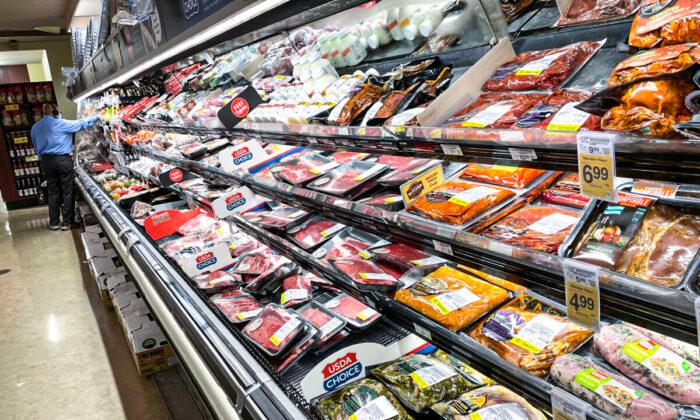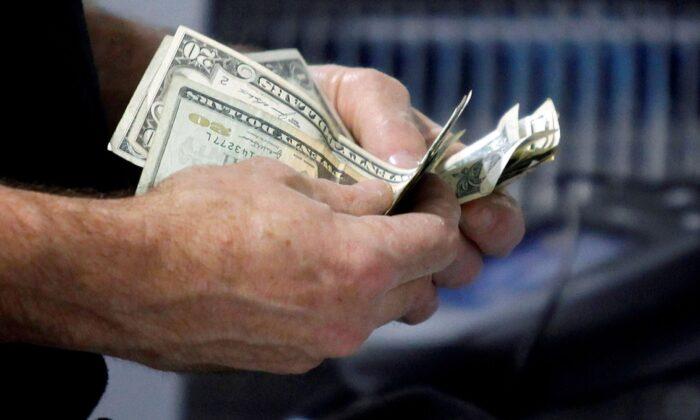The Bureau of Labor Statistics, keepers of all that’s sacred as far as employment and price data are concerned, just announced that inflation reached 7 percent in December 2021.
That’s three consecutive months at more than 6 percent and eight consecutive months at more than 5 percent.
Are we seeing a pattern yet?
We haven’t seen the Fed’s target rate of 2 percent since prices blew past it as the economy started crawling out of its pandemic fallout shelter. We’re clearly seeing something new here.
The Fed still believes that supply chain issues will ease up and that this will help bring prices down. But the truth is, these levels of inflation are likely to be the new norm.
The Fed’s make-believe inflation target has been 2 percent for as long as we can remember. The Fed has already rationalized that away—since they’ve kept inflation below that level for a significant period of time, it should be allowed to run higher for a period to balance things out.
That’s “Fed thinking” for you: “Your dollars were strong for a while, but now you’re going to have to pay more for a bit. Don’t worry, you’ll be fine.”
Another Kind of Inflation
For the past 40 years, we’ve been subject to what’s known as “cyclical” inflation. This is the kind of inflation that occurs during expansions and contractions in the business cycle. It’s totally normal and to be expected. For the most part, inflation has fluctuated around the Fed’s 2 percent level fairly regularly.But there’s another sort of inflation beast that consumers and producers alike would rather not deal with.
Secular inflation occurs when multiple breakdowns in the economic and financial systems occur.
The 1970s was such a decade. It was so bad that it became known as the “Great Inflation” (it actually started in the mid-1960s and didn’t end until the mid-1980s).
What sparked it all?
First, there was bad fiscal policy on the part of the government. President Lyndon Johnson’s massive deficit spending on his Great Society and the Vietnam War (spending which lasted into the 1970s) put the country in a massive hole.
Then there was bad monetary policy. Going into the 1972 presidential election, President Richard Nixon ordered his hand-picked Federal Reserve Chairman, Arthur Burns, to push rates lower to spark short-term economic growth. It’s claimed that Nixon said, “We'll take inflation if necessary, but we can’t take unemployment.”
There were artificial market manipulations that tried to control the overall economic situation. Nixon also imposed wage and price controls that exacerbated price increases when they were finally lifted.
Finally, there were two huge disruptions in the supply chain of oil (the Saudi embargo of 1973 and the overthrow of the Shah of Iran in 1979) that led to rationing and soaring energy prices.
These are not part of the typical business cycle.
Today Things Look a Lot More Like the ‘70s
If you look at the current situation, you’ll see that it has a lot in common with the inflation problems of the ‘70s.Sane monetary policy has been abandoned. The Fed has pushed rates to zero and held them underwater for the past 12 years to effectively slap the defibrillator paddles on the economy.
Fiscal policy is out of control. Literally. Government programs are now being priced in the trillions of dollars—and they talk about them like it’s nothing. (Think about it: In 2008, Hank Paulson asked Congress for $750 billion to save a crashing global financial system, and that was an unthinkable amount!)
Supply chains are in disarray (and that’s putting it mildly). Shortages in certain products are squeezing prices everywhere.
The labor market continues to struggle to return to pre-pandemic levels. This has forced employers to offer higher wages and other incentives to attract workers—which will ultimately show up in the prices we all pay.
Today’s economy is no longer “typical.” And that means the inflation we’re heading into won’t be, either.
Prepare for the Worst, Hope for the Best
As inflation starts taking hold (and rising even further), there are a couple of areas you can look to for value.One is the consumer staples sector—these are the things we have to buy week in and week out. And companies that provide these products tend to perform well regardless of economic ups and downs. Raw goods industries and commodities will be a good place to keep some money safe as well.





